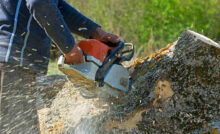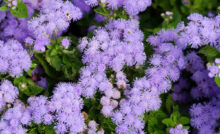Best Hydroponic Media


Hydroponic systems offer an ideal way to cultivate herbs, flowers, fruits, and veggies in a controlled environment – perfect for people without much space in which to plant a garden, either outdoors or inside their home. Select the best hydroponic.
Hydroponic growers must expect an initial learning curve when embarking on this type of cultivation. Without soil’s protective effects, newcomers must be wary of overfeeding plants, which could result in nutrient toxicity issues.
Perlite
Perlite is an expandable white granular material heated to expand, which makes it one of the best hydroponic materials for use as a growing medium. It can be used alone or combined with other media and comes in various grades to meet different growing medium needs. Perlite boasts a neutral pH level, exceptional wicking action, and absorption abilities while being highly porous and absorbent – essential features when conducting soilless cultivation! In addition, perlite provides excellent aeration, which contributes significantly towards soilless cultivation as plants gain most of their oxygen through roots; proper aeration also supports earthworms and other organisms in keeping a healthy food web.
Perlite stands out among hydroponic materials as one of the top choices because it is inexpensive, inert, and easy to work with. Furthermore, perlite doesn’t decompose quickly, so it will remain viable long after being placed into a grow tray.
Perlite is often a favorite ingredient in orchid, cacti, and succulent potting mixes because its drier conditions suit these plants well, yet it is also used extensively by other types due to its unique aeration properties. Perlite can also be added directly into most hydroponic setups (drip systems as well as flood and drain systems) or added into traditional soil mixes as part of any typical gardening endeavor.
Coarse perlite is one of the most versatile materials, used both as an aeration agent for hydroponic soilless media and independently as a medium for seeds, cuttings, or starter plants. Its coarse granules help promote root development by providing proper drainage while avoiding overwatering; additionally, it’s an ideal addition to existing soils or garden compost to enhance performance and growth.
Fine perlite resembles fine powder that has been lightly crushed, with dusty and slightly moist characteristics when dry; handling should be handled carefully to avoid splinters. With its 34% water-holding capacity, it can be used as an orchid planting mix or a standalone medium for seedlings and cuttings.
When using a mixture of perlite and other potting media, it’s best to start with coarse perlite first before gradually adding finer materials throughout your grow tray. This will allow the coarse perlite to aerate the mixture and maintain moisture longer while providing ample aeration.
Coco Coir
Coco Coir is a growing medium made from the husks of coconuts that are commonly used in hydroponics, offering excellent water retention and aeration and helping your plant retain more of the nutrients it consumes. You can soak this material to provide nutrients directly at its roots – while also helping avoid over-fertilization! Coco Coir is easy to work with – an ideal choice for beginners!
Coco Coir can be best utilized by placing seeds within one of its swelled discs and gradually adding water until sprouting occurs. After transplanting your seedling to larger containers for growth, keep it moist by keeping the coco coir dry as much as possible; alternatively, mix coco coir with other forms of soil until finding an ideal mixture for your plants.
Coco coir comes in various forms, from pith and fiber to chips. Pith is the densest form, similar to peat moss in texture. While it holds on to lots of moisture for retention purposes, fiber offers less density while maintaining finer textures; it is often used to amend soil or in containers as an amendment. Lastly, coarser-textured chips serve to aerate the soil. In some grow beds, these coarser materials may even serve as an alternative rock wool replacement material.
Coco coir can serve as an economical and time-saving alternative to soil, making it the ideal growing medium. But keep in mind that coco coir is inert, meaning pH levels should be tested regularly, and any deficiencies should be addressed with solutions or supplements as necessary.
Coco coir can also serve to deter pests. Most insects tend to prefer soil over coco coir for landing spots, leading to potentially costly issues for gardeners; coco coir deters these pests and allows growers to avoid spraying pesticides or using other forms of insect control as often – this feature makes coco coir an invaluable addition for indoor gardeners who might lack enough space outside for effective outdoor pest management.
Rockwool
Rockwool is one of the go-to grow media choices among hydroponic cultivators. Available in different sizes, from small cubes for seed starting and cuttings to giant slabs capable of supporting entire plants, this sterile medium poses no risk of introducing pathogens or insects into your crop’s root zone.
Rockwool doesn’t contain any naturally occurring nutrients like coco coir does and relies on hydroponic nutrient solutions with proper pH adjustments to provide adequate nourishment at each stage of growth. Therefore, new or inexperienced growers must make sure the solutions used have the appropriate pH settings, particularly prior to planting your rock wool cubes in them, to avoid problems with uptake or deficiency symptoms. Soak them first for the best results!
Rockwool holds plenty of oxygen, which makes it less susceptible to overwatering than other grow media. Still, it is wise to monitor its moisture level regularly – too much water can saturate and oversaturate it, leading to root rot, or too little may cause too quick drying out and lead to issues with wilting and other problems with your plants.
Once rockwool has outlived its useful life, it must be handled carefully to prevent its pieces from breaking apart and emitting potentially hazardous dust particles into your environment. When handling rockwool, wear gloves, a face mask, and goggles; once finished, shred it and incorporate it into potting soil or compost to provide extra oxygen directly to plant roots.
Rockwool is an excellent material to use when growing clones, starting seeds, or propagating cuttings – it’s easy to work with and doesn’t introduce pathogens or bugs into your crop environment – not to mention its long lifespan if cleaned and sterilized between uses to avoid any contamination of plants and unwanted microbe growth. Just ensure it is thoroughly disinfected each time before use to prevent contamination of your plants or the growth of unwanted microbes!
Hydroponic Nutrients
Hydroponic system growth requires different nutrients than soil systems do, as they dissolve in water and are absorbed through their roots by plants. You can purchase hydroponic nutrient solutions at gardening stores or online. They come with combinations of various nutrients tailored to trigger desired outcomes in plants; either liquid or powder form is available. Choosing an effective formula will ensure that all your plants get all of the nourishment they require to flourish big and strong!
When purchasing hydroponic nutrients, make sure they’re specifically tailored for this system. This will make the process much more straightforward and prevent any potential pump, tube, or mister clogs. While mixing your solutions may seem appealing, this is not recommended as they’ll degrade over time and lead to poor growth. A nutrient solution may contain either organic or synthetic ingredients; either can be carefully blended before being used – the former is often made from fish emulsion with high nitrogen levels and bone meal with plenty of phosphorous, while synthetic options typically contain nitrates, sulfates, phosphates, plus chemicals explicitly created by humans!
As well as essential nutrients, you may also wish to add supplements and additives that can boost the performance of your plants. This could include anything from simple iron supplements like chelated iron oxide to more complicated solutions like magnesium-calcium sulfate blends or amino acid treatments that strengthen their resistance against fungal infections and insect attacks.
The CYCO Platinum Series is an excellent hydroponics choice, as it contains all of the essential elements a plant needs for optimal development. These include base nutrients that meet all critical plant needs, additives that prevent fungal disease and insect attacks, and kelp extract, which reduces how much water plants require to absorb their nutrients.
The nutrient mixture has been designed specifically to suit different growing methods, including cococoir and LECA. Furthermore, its organic ingredients ensure it’s safe for the environment.
Read Also: Flower Preservation Near Me in NYC
Recent Posts
Exactly how Financial Planners Can Improve Savings
Hello there! Have you ever believed that you're doing every little thing right yet your…
Keeping Your Electric Nectar Collectors’ Effectively
In this article, we'll immerse into some super very simple ways to maintain your electric…
How you can Design a Commercial Green Roof structure
Hey there! 🌿 Ever contemplated turning that dull business-oriented rooftop into a lush eco-friendly oasis?…
The way to Maximize Chat GPT Free of charge Usage
Hey there! If you're interested in learning how to make the most out of Talk…
The way to select the Right Crypto Lender
Hi there, crypto enthusiasts! If you're delving into the world of crypto credit or considering…
Top rated Strategies for Boosting in WoW
Here you are at the ultimate guide on upping your experience in World of Warcraft…

